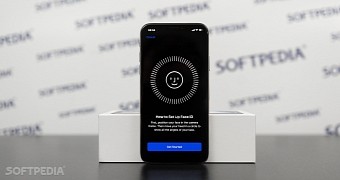Apple’s new iPhone X is causing headaches and eye strain to a number of customers due to the implementation of Pulse Width Modulation (PWM), a technology that causes the display to flicker at varying frequencies depending on the brightness level.
While PWM has been causing similar problems to sensitive users for a while, this is the first time iPhone X owners are reporting what some describe as “eye strain, headaches, and throbbing pain behind the eyes.”
A post on reddit calls for Apple to add an option in the “Accessibility” settings to allow PWM to be turned off, with two videos (embedded below) showing the difference between the iPhone X (which has the technology) and the iPhone 8 (which doesn’t) when filmed with a slo-mo camera.
“The iPhone X flickers a lot in a manner that’s supposed to be indiscernible to the human eye but for some users this aggressive, varying flicker can cause a whole host of health issues. Noticeable or not, this is not ideal for the eyes especially with hours of usage daily,” the reddit post reads.
While technically the implementation of PWM takes place at hardware level and Apple won’t be able to turn if off completely, the company should at least be able to reduce the effects it causes to users experiencing health problems by turning to more controllers for adjusting LED dimming.
PWM also causing issues on MacBook Pro
While customers are only now reporting such issues on the iPhone X, PWM has been causing problems to Apple customers since at least 2008.
A discussion on Apple’s support forums and having no less than 164 pages suggests headaches and eye strain were experienced after using the MacBook Pro even for short periods of time, like 15 or 20 minutes.
“I bought a new 15" MBP on November 4, spent the evening migrating, and within 10 minutes of actually using it on the 5th I developed severe motion sickness symptoms. Within 30 minutes my eyes hurt. I tried to work through this and failed absolutely,” one user posted in the forums.
So what exactly is PWM and why is it causing health issues?
First and foremost, it’s worth noting that only a few customers are said to be suffering from headaches, eye strain, and similar symptoms because normally, eyes shouldn’t detect the screen flickering that PWM produces.
In short, Pulse Width Modulation comes down to simulating an analog voltage with a digital implementation, and it’s being used primarily for dimming the light of a display (for our more technical readers, Wikipedia has a good write-up on this). Digital signal controllers are mostly used on smartphones because they're smaller and cheaper, and PWM is needed to achieve the results of an analog controller.
The flickering is used as part of a more complex process to measure the frequency, calculate the brightness, and dim the screen, and is supposed to be unnoticeable to the human eye. Those more sensitive, however, can detect the flickering, which in turn causes headaches and eye strain.
Apple isn’t the only company that turns to PWM to have devices automatically adjust brightness, and similar issues have been reported on other devices, like the Samsung Galaxy S series and the Google Pixel. In the case of Android phones, however, disabling PWM was possible at a software level after rooting phones.
Apple hasn’t yet commented on the effects of PWM on iPhone X users, but it’s believed the Store staff would agree to replace devices with the iPhone 8 should health issues be reported.

 14 DAY TRIAL //
14 DAY TRIAL // 
